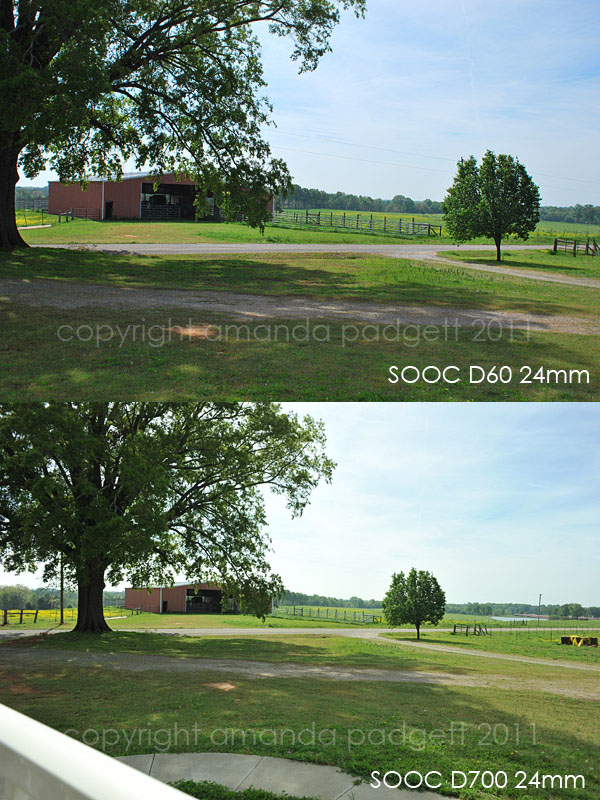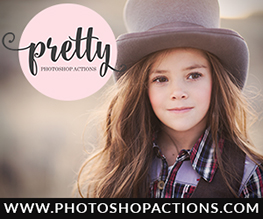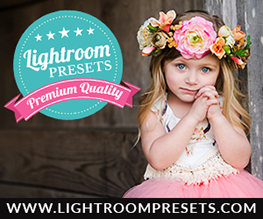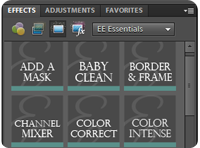New photography enthusiasts who are looking to invest in additional lenses often ask me about the differences in focal lengths, so I thought I would do a quick comparison for you, using the prime lenses in my own camera bag.
These pictures are a) not great b) done at the spur of the moment c) straight out of the camera d) not great…yes I needed to say that again. 😉 I put my D700 on a tripod, got a model who would not move in between shots and snapped one shot with each different lens. I did not move, the camera did not move, only the lenses changed. I did not alter any settings, just changed the lens, focused and took the shots.
My .02 on each lens:
- 24mm is great for landscapes, architectural pictures, and any time you want a wide angle shot, like of a large group or in enclosed space. There is some distortion on the sides, like a bending of sorts. Also, you do not want to use this lens for close up portraits as the head will be very enlarged.
- 35mm is a nice all around lens. Wider than a 50mm, so nice for indoor shots in the winter. If you get too close to your subject, there will be a bit of distortion (their face and nose will be a bit bigger than normal).
- 50mm is considered a “standard” lens. It is a wonderful lens for a variety of purposes. Takes great food shots as well as portraits. This lens is often called the “nifty fifty” because it is very versatile and just a “nifty” lens to have on your camera.
- 60mm is also a “standard” lens. It gives you a bit longer focal length than the 50mm. My particular 60mm is a macro lens, so I can take lovely portraits as well as get in really, really close for a macro shot.
- 85 mm is considered a telephoto, meaning it kind of zooms into your subject. This lens is a wonderful portrait lens, creating creaming skin and dreamy bokeh. You need lots of room to use this lens because you have to be further back to get the shots.
Now, the next question that I know will come is what is the difference for a lens between a full frame (Nikon D700, D3, Canon 5D, Canon 1D, Sony A850) and a crop body (all other Nikon, Canon, Sony, Olympus and Pentax camera bodies). Full frames are going to give you a wider field to shoot, a crop bodies are going to give you a closer view of the subject, almost like zooming in a bit.
Confused about full versus crop bodies? Instead of trying to explain myself, I am referring you to the brilliant Darcy at My3Boybarians, where she wrote a very helpful post explaining that very topic.
To show you a quick example, I went outside and placed my tripod in a spot, put the 24mm lens on my Nikon D60 (crop body), took the shot, then put the D700 (full frame body) with the 24mm on the tripod and took a shot. You can see how much more of the view I get in the D700 picture compared to the D60 picture.
It may be hard to believe, but the tripod did not move, the cameras were each set down on the tripod in the same spot. Full frame cameras will give you a wider field of vision, crop bodies will give you less.
I used ISO 200, aperture of f8 and matrix metering on both cameras. The only difference was the White Balance, I forgot to set that the same on both cameras, so the D700 was on Auto WB and the D60 on Direct Sun preset.
*********************************************************
p.s. Are you new to photography and want to learn how to shoot in manual? My live, online beginners photography workshop is this Tuesday, April 12 from 8:00 to 10:30 PM EST. Click HERE for more information and to register.









Great post, Amanda! Very helpful to a dSLR newbie like me!
Ha! LOVE your model… that’s a good idea.
This is such an awesome and helpful post, Amanda! Just in time, too, because I put a 50mm on my birthday list. It sounds like that’s a good place for me to start (in addition to having my kit lens). The visual differences are key and totally illustrate the point – otherwise, we might be all, “Huh?” Thanks!!
This is a great example of the differences. So helpful to see this.